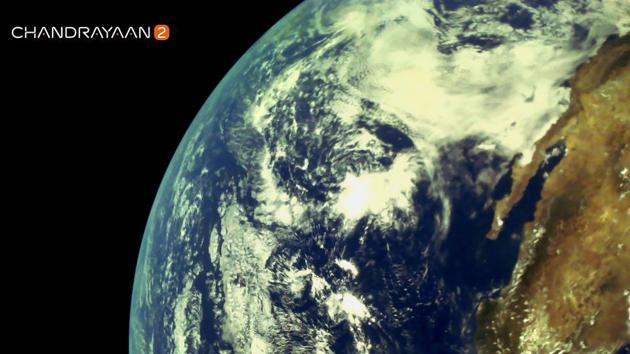Chandrayaan-2 to enter trans-lunar orbit on August 14
On August 14, as the spacecraft approaches the highest point on the orbit around the Earth, another manoeuvre will help it escape the Earth’s gravitational influence and enter a trans-lunar path for onward journey to the moon.
Scientists at the Indian Space Research Organisation (ISRO) on Tuesday raised the orbit of Chandrayaan-2 around the Earth for the fifth and final time.

The propulsion system on board the spacecraft was fired at 3:04 pm for 1041 seconds to reach the orbit 276 x 1,42,975 km, the space agency said.
“All spacecraft parameters are normal,” an ISRO official said on the condition of anonymity.
On August 14, as the spacecraft approaches the highest point on the orbit around the Earth, another manoeuvre will help it escape the Earth’s gravitational influence and enter a trans-lunar path for onward journey to the moon.
Chandrayaan-2, India’s second mission to the moon, is scheduled to reach a lunar orbit on August 20.
Chandrayaan-2 will take 48 days from its launch to land on the South Pole of the moon. In comparison, Apollo 11, the first mission to take a man to the moon, took about four days. This is because the Indian mission is using the Earth’s gravity as the orbit was being raised slowly to gain velocity and get slung towards the moon.
The spacecraft will be in this trans-lunar trajectory for seven days before being inserted into an orbit around the moon on August 20.
“The trans-lunar injection (a manoeuvre to put the spacecraft on the path towards moon) will happen on August 14 between 03:00 and 04:00 am. The path is constantly monitored by a team which calculates the manoeuvres that need to be done,” the ISRO official cited above said.
The propulsion systems would be fired four more times in the next 13 days on the lunar orbit to bring the spacecraft to a 100x100 km circular orbit before the lander-rover separates on Day 43.
During this period, the optical high-resolution camera on-board will be turned on to scout for a suitable landing site in the lunar south pole.
The images taken will be transmitted to Earth and processed after which the landing site map will be uploaded to the lander-rover before its powered descent to the moon on Sept 7 at 2.58am.






